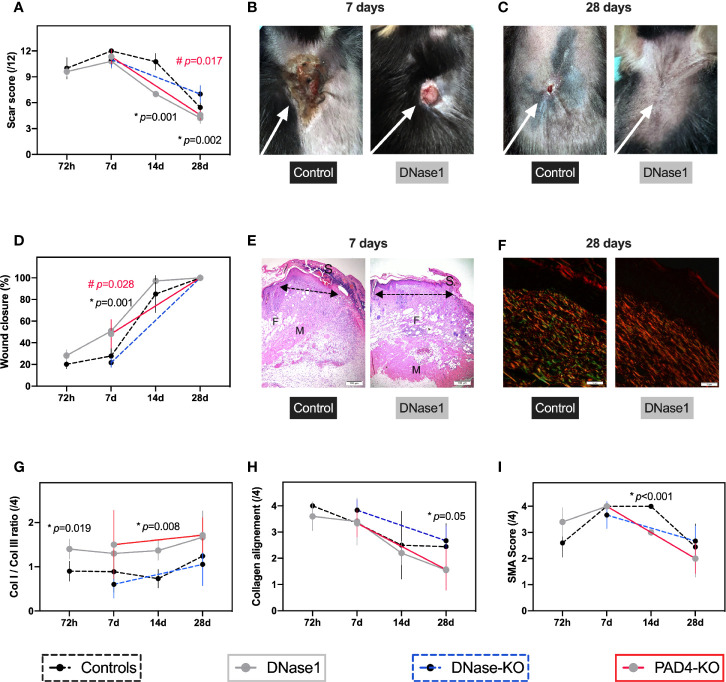Figure 3.
Therapeutic targeting of NETs improves secondary intention wound healing. In all animals a 1.5 cm2 thermal injury was induced. For the wildtype mice four timepoints (72 h, 7, 14, and 28 days) were performed and two (7, 28 days) for the knockouts. Controls n=5-6, DNase1 n=6, DNase1-KO n=5–6, Pad4-KO n=5–6. (A–C) Animals that received DNase1 or with limited NETs formation (Pad4-KO) had significantly superior scar scores than controls. (D–H) Animals with DNase1 treatment or without NETs showed a significantly faster wound closure and switch from collagen 3 to 1. Additionally, an improved collagen alignment after DNase1 treatment was found, indicating a faster maturation of the scar. (E) H&E staining of the thermal injury on day 7 showing the left wound border. Arrows indicate the reepithelization tongue progressing significantly faster in animals with DNase treatment. S indicates scab which is made up of necrotic tissue and found is less-optimal wounds. M indicates muscle layer and F adipose tissue. In control mice the subcutaneous fat and muscle layer was lost. However, in mice that were treated with DNase1 both layers were not affected possibly suggesting a secondary injury induced by extracellular traps. (F) Parallel collagen fiber formation was observed predominantly during early stages and persisted significantly in control and DNase1-KO scars until day 28; whereas basket wave-like texture reminiscent of normal skin was more evident in animals with DNase treatment or with limited NETs formation (Pad4-KO). Moreover, in controls and DNase-KO mice immature fibers (Collagen III; green vs. Collagen I, red) remained dominant. (I) SMA was only affected partially by DNase1. Data shown as Mean ± SD. Comparison was performed always in comparison with controls. Statistics: mixed-effect model with Geisser-Greenhouse correction as well as Dunnett’s multiple comparison test. *DNase1 vs. controls. #PAD4-KO vs. controls.

